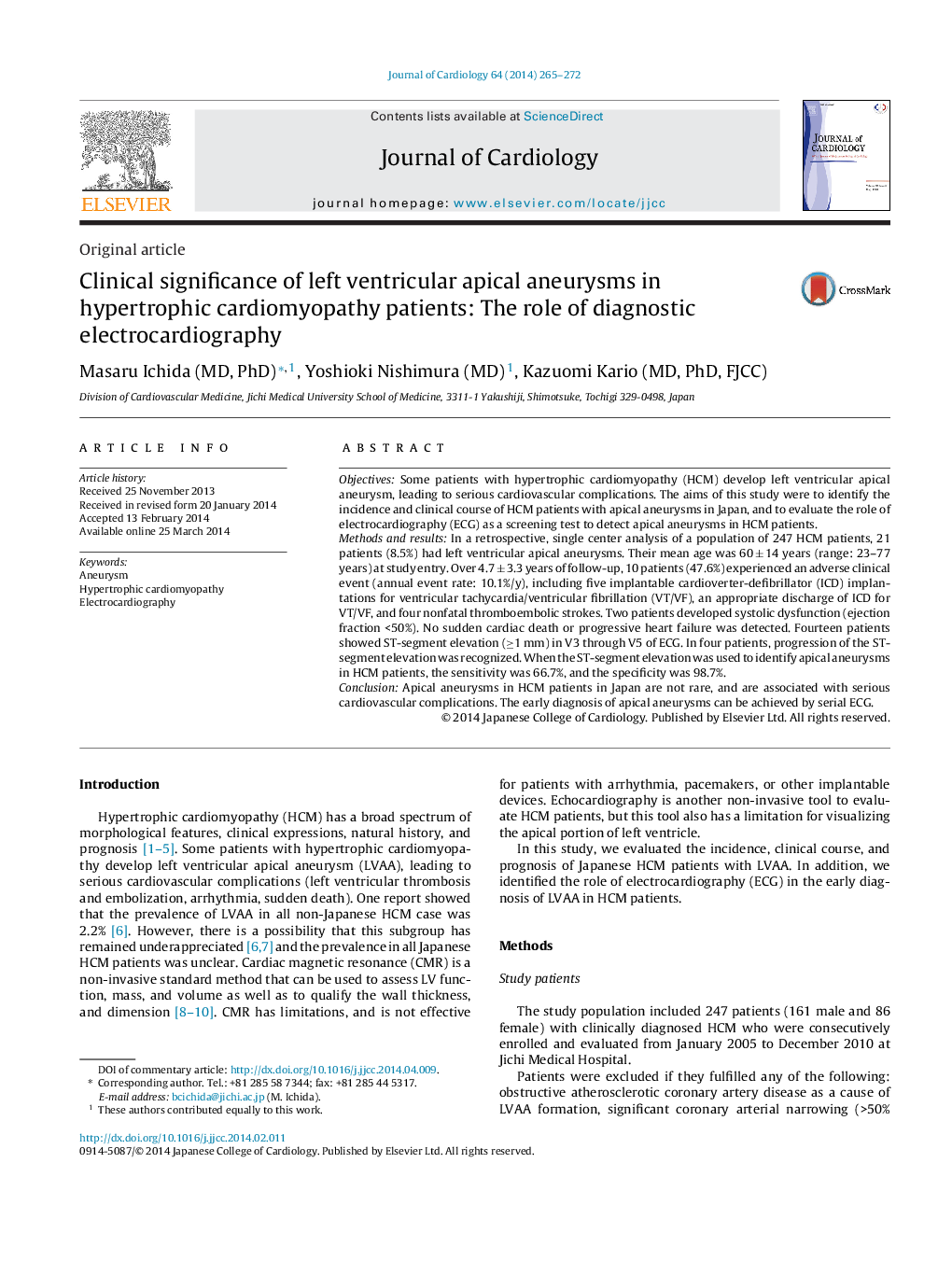| Article ID | Journal | Published Year | Pages | File Type |
|---|---|---|---|---|
| 5984249 | Journal of Cardiology | 2014 | 8 Pages |
ObjectivesSome patients with hypertrophic cardiomyopathy (HCM) develop left ventricular apical aneurysm, leading to serious cardiovascular complications. The aims of this study were to identify the incidence and clinical course of HCM patients with apical aneurysms in Japan, and to evaluate the role of electrocardiography (ECG) as a screening test to detect apical aneurysms in HCM patients.Methods and resultsIn a retrospective, single center analysis of a population of 247 HCM patients, 21 patients (8.5%) had left ventricular apical aneurysms. Their mean age was 60 ± 14 years (range: 23-77 years) at study entry. Over 4.7 ± 3.3 years of follow-up, 10 patients (47.6%) experienced an adverse clinical event (annual event rate: 10.1%/y), including five implantable cardioverter-defibrillator (ICD) implantations for ventricular tachycardia/ventricular fibrillation (VT/VF), an appropriate discharge of ICD for VT/VF, and four nonfatal thromboembolic strokes. Two patients developed systolic dysfunction (ejection fraction <50%). No sudden cardiac death or progressive heart failure was detected. Fourteen patients showed ST-segment elevation (â¥1 mm) in V3 through V5 of ECG. In four patients, progression of the ST-segment elevation was recognized. When the ST-segment elevation was used to identify apical aneurysms in HCM patients, the sensitivity was 66.7%, and the specificity was 98.7%.ConclusionApical aneurysms in HCM patients in Japan are not rare, and are associated with serious cardiovascular complications. The early diagnosis of apical aneurysms can be achieved by serial ECG.
